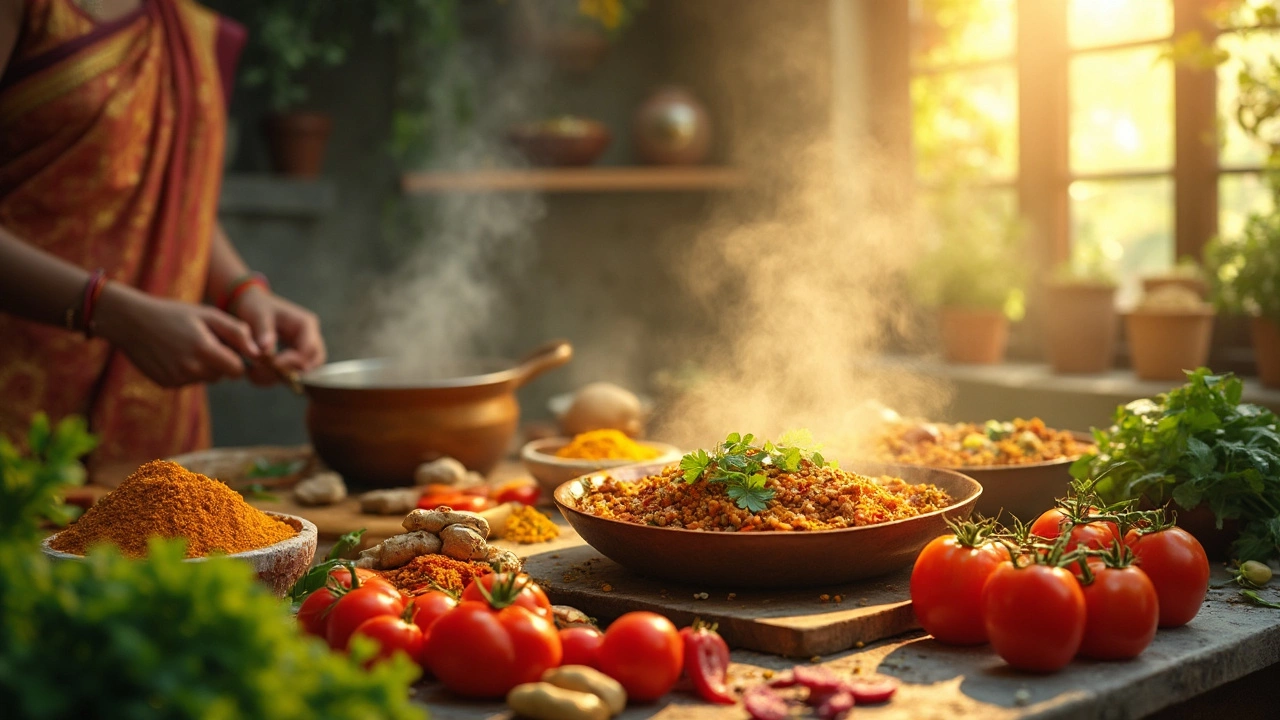Food Habits in India – What We Eat and Why
India’s food habits aren’t just about taste; they’re a blend of climate, history, and family routines. From the early morning tea to the late‑night snack, each bite tells a story. Understanding these habits helps you enjoy meals like a local and avoid common mistakes when you visit.
Daily Meals and Regional Flavors
Most Indian households stick to three main meals. Breakfast can be light—think fluffy idli in the south or hot paratha in the north. Lunch often features a staple grain (rice or roti) plus a veggie curry and a side of dal. Dinner is similar but might be lighter if the day was busy.
Regional differences matter. In Gujarat, a typical day includes dhokla or khakhra for breakfast, a thali of rotli, lacha (vegetable), and buttermilk at lunch, and a simple soup at night. Meanwhile, coastal states like Kerala serve coconut‑rich dishes and fish daily. Knowing the local staple lets you pick the right restaurant or street stall.
Street Snacks and Special Treats
Street food is a huge part of Indian food habits. Gujaratis love fafda with jalebi, while the streets of Delhi buzz with chaat—a mix of crisp dough, tangy chutney, and spices. These snacks aren’t just filler; they’re social glue, shared over a quick chat.
If you’re exploring food habits, try the dishes highlighted in our popular posts: the famous Gujarat street food guide walks you through dhokla, sev usal, and more. The Dhokla article even explains why it’s called Gujarat’s national food and how families serve it for weddings and everyday meals.
When you grab a snack, watch the timing. Most Indians enjoy a light bite around 4 pm—called “evening tea” or “coffee break”. It’s usually accompanied by samosa, pakora, or a sweet like balushahi. This habit keeps energy levels up for the evening rush.
Portion sizes also reflect habit. Home‑cooked meals are served family‑style: everyone takes a little of each dish. Restaurants often mimic this style, offering thalis (plates) with several small items instead of a single large entree. Ordering a thali gives you a real taste of the everyday diet.
Health‑wise, Indian food habits include natural remedies. A pinch of turmeric in milk before bed is a classic tradition for better sleep and immunity. Similarly, a daily glass of buttermilk (chaas) helps digestion after a spicy meal. These small practices show how diet and wellness blend together.
To adopt Indian food habits at home, start simple: replace a weekend breakfast with poha or upma, sip ginger tea in the morning, and finish dinner with a small bowl of curd. You’ll notice how these tiny shifts make meals feel more balanced and culturally rich.
Whether you’re planning a trip, cooking for friends, or just curious, these food habits give you a practical roadmap. They’re easy to follow, delicious, and a great way to connect with India’s vibrant culinary tapestry.
